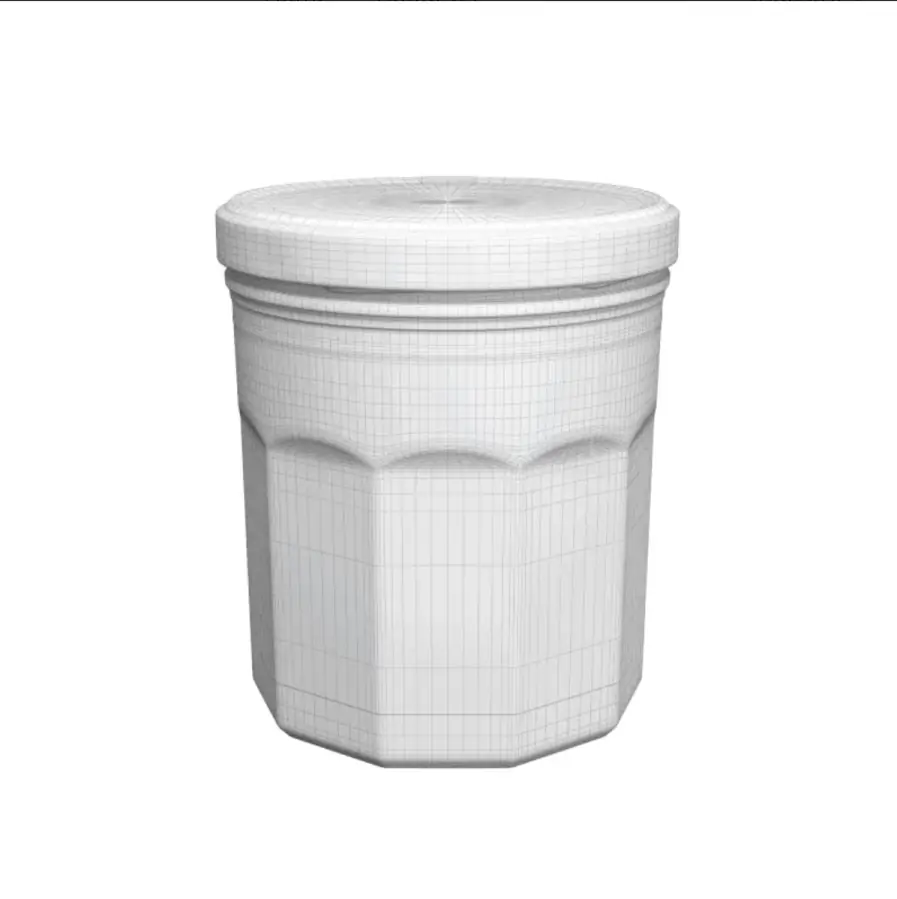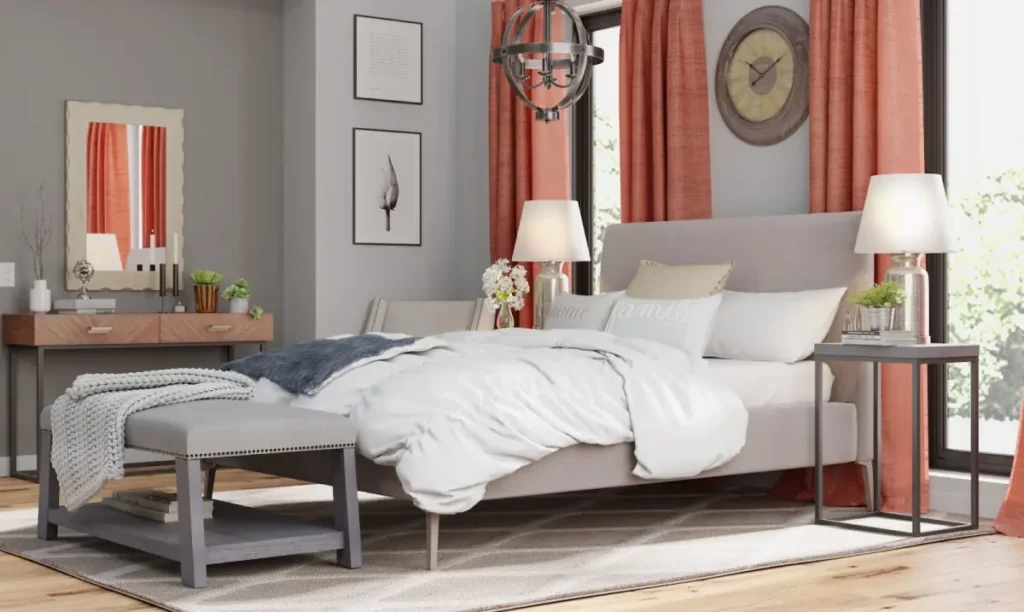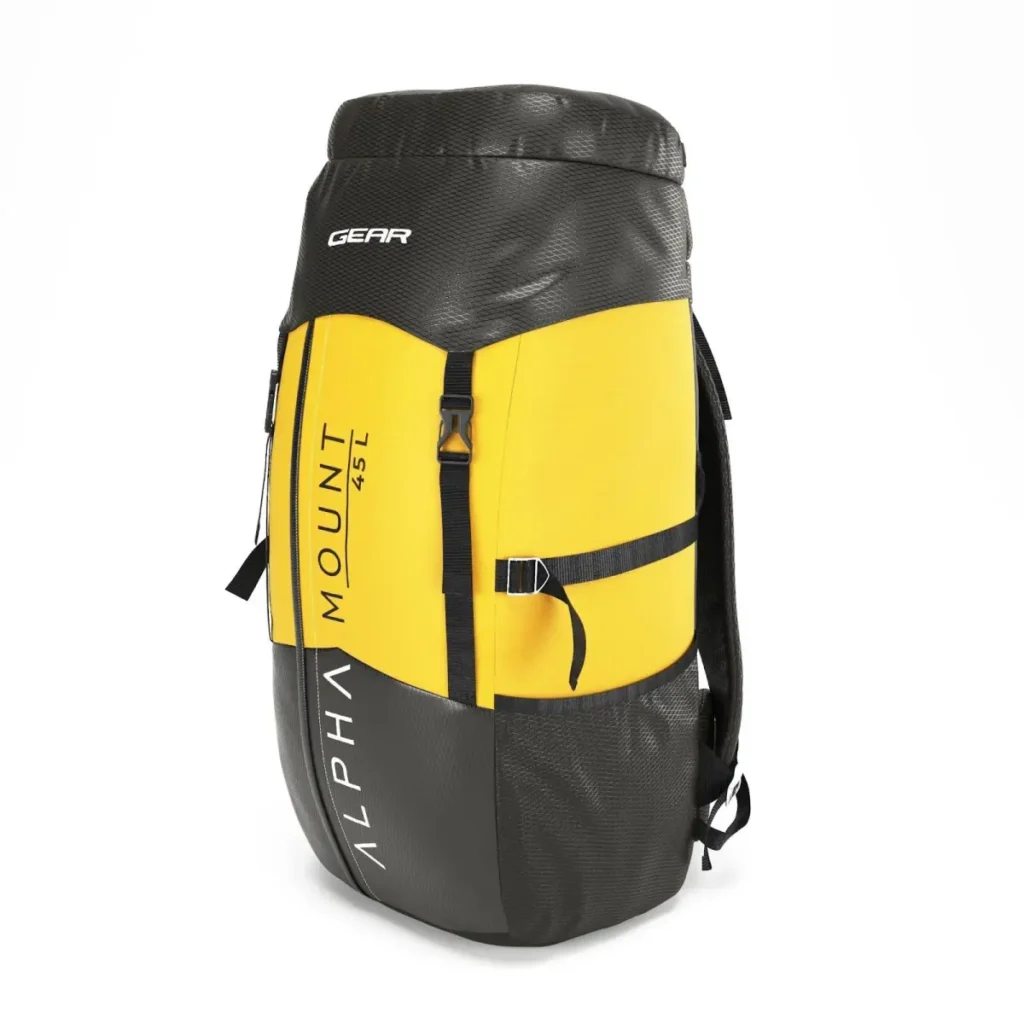3D assets have revolutionized how we perceive and interact with visual content. By crafting digital visual content that breathes life into a virtual environment, 3D assets seamlessly blend the boundaries between imagination and reality. From modeling and texturing to rendering the final product, the 3D asset creation process empowers the designers and developers to create cutting-edge video games, product presentations, and marketing campaigns.
In this blog, we will talk about the realm of 3D assets, the significance of having a structured workflow of 3D asset creation in different industries, tips for an efficient 3D asset creation workflow, and the trends shaping the 3D asset landscape.
What Is A 3D Asset?
A 3D asset is a digital representation of a three-dimensional object or an environment created using computer-aided design software or 3D modeling applications. 3D assets significantly enhance the digital visual experience by adding depth, realism, and interactivity.
They are used in different industries- from movies, entertainment, architecture, and product design to create characters and animations, visualize buildings and interior spaces, and prototypes of products, respectively.
What Is The Significance Of 3D Assets In Different Industries
3D assets have transformed how products are conceptualized, designed, marketed, and experienced. The evolution from flat 2D representation to 3D experiences has enhanced creativity, improved decision-making, and elevated engagement for the following industries’ customers.
- Consumer Electronics: 3D assets enable manufacturers to visualize and iterate on their products, from smartphones to headphones and gaming consoles, before physical production begins. It also plays a significant role in marketing and advertising campaigns. Allowing companies to showcase their products from all angles, 3D assets provide potential customers with a comprehensive view of their features, design elements, and color options.
By utilizing 3D assets, Augmented Reality (AR) experiences enable customers to interact virtually with electronics before purchasing, enhancing consumer confidence and fostering a stronger bond with the brand.
- Furniture and Decor: In a digital environment, these 3D assets allow manufacturers, designers, and consumers to visualize and experiment with different design concepts. Designers can use 3D assets as a creative exploration tool to test different materials, finishes, and configurations before committing to physical production.
Online platforms equipped with 3D assets empower consumers to visualize how furniture or decor will fit into their living space, enabling them to make better buying decisions. Customers can even superimpose 3D-rendered furniture on their natural surroundings, ensuring a seamless fit and avoiding disappointment when items do not match.
- Real Estate: From anywhere globally, potential buyers and renters can virtually tour homes, apartments, and commercial spaces through these 3D assets. By providing a dynamic and interactive experience that aids decision-making, this technology transcends the limitations of static images.
By showcasing properties with interactive 3D tours and virtual walkthroughs, real estate agents can reach a larger audience and engage more potential buyers.
As a part of architectural visualization, 3D assets are crucial for presenting proposed designs to clients and stakeholders. By providing a lifelike representation of buildings, interiors, and landscapes, these 3D assets help clients visualize the final result and allow them to give feedback and modifications early on.
What Is The Importance Of Having A Structured Workflow In Creating High-Quality 3D Assets?
A structured workflow is the backbone to achieve high-quality 3D assets. Providing a roadmap for the creative process and defining, documenting, and optimizing every step ensures the creation of high-quality 3D assets. Listed below are some reasons why having a structured workflow while creating a 3D asset is essential.
- Quality Control: A structured workflow has guidelines and quality control checkpoints. This ensures that the 3D asset meets the standards and requirements during every stage of the creation process. Since this helps identify and rectify the issues early on in the process, it helps maintain the quality of the 3D asset.
- Consistency: A structured 3D asset creation workflow maintains a cohesive look and feel throughout the 3D assets through standardization, asset naming convention, and version control.
- Speed Up The Process: A clear workflow will ensure the artists know how to proceed with the 3D asset creation and in which order. This removes the possibility of any guesswork, reduces any unnecessary iterations, and speeds up the production process.
- Adaptability: Artists can reuse successful approaches and techniques while tailoring the workflow to suit the specific requirements of each project with a well-designed workflow.
- Organization: A well-structured workflow helps in the proper documentation and organization of files and 3D assets, which makes it easy to locate resources, track progress, and review earlier stages whenever required.
How Does The 3D Asset Creation Workflow Vary In Different Industries?
The varying goals, project requirements, tools, and technologies can impact different industries’ 3D asset creation workflow. Let’s look at how the workflow will differ:
- Gaming: To maintain a playable frame rate, gaming 3D assets must be optimized for real-time rendering, which means they must be designed to be rendered on the fly as the player interacts with the game. Furthermore, since games need to run smoothly on different platforms and devices, the 3D assets should be optimized for performance.
Additionally, a major restricting factor for game development is the available memory on the platform. Techniques like level of detail and texture compression can help manage resource consumption. Another aspect to consider is the variation of the required 3D assets to create various environments and characters. Asset creators should be able to generate variations while maintaining consistent visual quality.
- Film and Animation: 3D assets must be high-resolution and well-detailed for the pre-rendered sequences in the film and animation industry. Since they are viewed in high-definition formats and on larger screens, every asset detail must hold up when looked at closely.
Unlike games, where the 3D assets must be optimized for real-time, film and animation have no constraints. Moreover, unlike real-time applications of the game, the production timeline for films and animations is relatively longer. This requires meticulous asset creation, iteration, and refinement to generate convincing visual content of the highest quality.
- Architectural Visualization: To showcase architectural concepts effectively and communicate the sense of space, it is crucial to pay close attention to scale, accuracy, and lighting. Adding depth and realism to the scene is essential, which can be showcased by creating 3D assets that display how light accurately interacts with the structure and the environment.
Since architectural building can have potential design transformation in the development process, it is essential that the asset thus created can accommodate the changes and be swiftly updated to showcase the iteration in the design.
Moreover, architectural visualizations are used for marketing and advertising purposes. Hence, the asset should highlight the features and USP of the building.
- Product Design: 3D asset creation in the product design industry is geared towards representing the product for various applications like marketing, presentations, prototyping, and manufacturing.
Attention to detail, the accuracy of materials, and texture hold utmost importance while creating 3D assets for product design since they should be able to communicate the tangible qualities of the product.
When it comes to prototyping and manufacturing, it is essential that the asset accurately displays every minute detail like the screws, mold lines, snaps fits, and other such features.
- Marketing and Advertising: The product marketing and advertising industry focuses on creating compelling, visually appealing, and highly functional visual content that conveys the brand message and makes the customer take action. The asset should be created with an imaginative context, creative lighting, stylized visuals, and exaggerated features.
What Are The Common 3D Asset Creation Pitfalls And How To Avoid Them?
3D asset creation can be complex, intricate, and prone to mistakes, overlooking which can mar the result. Let’s look at common 3D assets reaction mistakes and how to avoid them.
- Poor Topology: An ill-structured geometry can result in deformation issues during animation and can cause difficulty in UV unwrapping. A bad topology can result from numerous reasons, one of the most common of which is Ngons. Ngon is a polygon that has more than four sides. It can result in problems like increased vertices and uneven golfing. Another common topology mistake is loose vertices, which can lead to difficulties in animation or deforming the model.
Solution: Create a clean and efficient topology by using loops that will maintain smooth deformation and ensure proper UV mapping.
- Incorrect Scale: If your 3D asset is not scaled appropriately to match the real-world dimension of the object it represents, the visualization will not appear correct. Basing a real-world object like a building on this 3D asset can result in serious problems, such as collapsing the structure because the 3D asset was not scaled correctly.
Solution: Use consistent measuring units that align with the real world. Perform diligent referencing to ensure the 3D asset aligns accurately with the intended context.
- Overlooking Optimization: Ignoring optimization can significantly impact the performance of the visual content and the user experience. An unoptimized 3D asset will not be compatible across different devices, may require more time to load, and can restrict the project’s scalability.
Solution: Use varying levels of detail to create a different version of your 3D assets. For example, when the asset moves farther from the camera, toggle to lower detail versions, as this will reduce the polygon count and enhance performance. You can further mitigate unnecessary polygons by implementing an efficient topology and removing any hidden faces that might not be visible during rendering.
- Overusing Modifiers: We understand that you must make the 3D asset as realistic as possible, but going overboard with details like texture, color, and lighting can make the image look fake. This is called overusing modifiers.
Solution: Only use modifiers whenever necessary to maintain an editable geometry. It is essential to remember that not all modifiers work well together, so you should implement modifiers in a way that results in an efficient outcome.
- No Reference Point: A reference point is necessary to ensure accuracy and consistency in the output. It can help you navigate through the entire design, a lack of which might lead to you losing track of where you are in the design.
Solution: Once you understand the project, start the asset creation process by creating a center point or origin. Use this reference point to create other points and develop your 3D asset.
What Are The Emerging Technologies Shaping 3D Asset Creation?
- Real-time Ray Tracing: Real-time tracing simulates light’s interaction with surfaces, materials, and environments in real-time, which results in more realistic and visually impressive results. Artists can preview their 3D assets in real-time under varying lighting conditions and camera angles without time-consuming rendering processes. This assists in refining the 3D assets for optimal visual impact. By utilizing real-time ray tracing, artists can change 3D assets instantly and see the results, enabling quicker exploration and adjustment of designs.
- Generative Adversarial Network(GAN)– GAN is a machine learning model that consists of two neural networks- a discriminator and a generator. They work parallelly in a competitive process, wherein the generators try to create more realistic data, and discriminators try to detect fake data more accurately. GAN can be used to create an extensive collection of similar yet distinct 3D assets, such as trees and rocks, to make the scene look more realistic.
Furthermore, automating the generation of specific components can speed up the asset creation process and reduce the time and manual efforts invested in creating them.
- Machine Learning And AI: ML can analyze existing datasets of 3D assets to identify trends, preferences, and design patterns, helping to create new 3D assets that are more likely to resonate with users. It can also automatically refine and enhance the visual fidelity of the 3D asset. Machine learning can assist in detecting errors, inconsistencies, and glitches in 3D assets, improving quality control before 3D assets are deployed.
AI can make the 3D asset creation process more efficient and seamless by analyzing the user workflow and suggesting optimization techniques. They can also help asset creators discover resources that best fit their projects by recommending relevant 3D assets, textures, and components. AI-powered techniques can also improve the visual quality and realism of the virtual environment by simulating advanced lighting, shadows, and visual effects.
- Virtual Reality And Augmented Reality: AR and VR are catering to the increasing demand of making the 3D asset creation process interactive, immersive, and contextually aware. VR tools enable artists to sculpt, model, and render 3D assets in a more immersive environment, enhancing creativity and spatial awareness.
User interactions with AR experiences can generate data that can be used to optimize and refine 3D assets over time, enhancing the overall AR experience.
- Procedural Content Generation: Procedural content generation is a technique that uses algorithms to create content. In terms of 3D asset creation, it can be used to create vast and different types of 3D assets and environments. This can prove helpful in populating the expansive virtual world with diverse content. Introducing natural variations can also help make the 3D assets look realistic and not repetitive. It can also create 3D assets responsive to natural environments, such as a building showing signs of aging or a tree swaying due to the wind.
In terms of games and simulation, procedural content generation can enhance a player’s experience by generating unexpected encounters and exploration opportunities. It can also dynamically adjust the level design based on the player’s progress, making it more challenging and exciting.
Why Is It Better To Hire A Professional Over Doing 3D Asset Creation Yourself?
We understand this guide would have made seem 3D asset creation a simple process, but if you plan to do it yourself, we recommend going with a professional service provider due to the following benefits.
- Experience and Expertise: Learning to create high-quality 3D assets involves a significant learning curve that will require time and resource investment. Lack of knowledge and experience in 3D asset creation might lead to inefficiencies and delays if you spend a lot of time experimenting and making mistakes.
Professional service providers have a team of artists specializing in creating various 3D assets, ensuring they meet industry standards and client expectations.
- Efficiency And Speed: Creating 3D assets might extend the time it takes to complete and launch your project due to the learning curve and potential inefficiencies.
Compared to individual efforts, professional service providers have established workflows, tools, and techniques that enable them to work efficiently.
- Access To Tools And Technology: Professional service providers have access to advanced software tools and plugins that can enhance the quality and efficiency of asset creation, resulting in 3D assets with advanced features and visual effects.
- Cost-effective: A 3D asset requires powerful hardware, software licenses, and possibly third-party resources like textures, models, and plugins. Investing in these resources can be costly, especially for one-off or occasional projects.
Although hiring a professional service has a cost, it can be more cost-effective in the long run than building your team or attempting to create 3D assets on your own.
- Focus On Core Activities: When you outsource asset creation, you can concentrate on your core competencies and other aspects of your project. This is especially helpful for businesses with limited resources.
- Quality Control: Creating professional-grade 3D assets requires a deep understanding of various aspects, such as modeling, texturing, lighting, and more. Without the right experience and expertise, the 3D assets will be inconsistent and not up to industry standards.
A reputable service provider has a thorough quality control process to make the final 3D assets visually appealing, accurate, and appropriate for their intended purpose.
Enhance The 3D Asset Creation Process With House Of Blue Beans
You can count on House of Blue Beans’ skilled designers and artists to turn your concepts into stunning, lifelike 3D assets that will leave a lasting impression. Our tailored 3D solutions will enhance engagement and set you apart from the competition, whether you’re in gaming, e-commerce, architecture, or marketing.
Our commitment to precision and innovation ensures that your vision becomes tangible, whether it is intricately detailed models or captivating environments. With our unrivaled 3D asset creation service, you’ll engender curiosity, increase interactivity, and enhance the visual appeal of your content.
What Does Our 3D Asset Creation Process Look Like?
Different types of visual content have varied precision, intricacy, and responsiveness, which needs different kinds of 3D assets. At House of Blue Beans, we create two types of 3d assets:
High-fidelity 3D assets: A high-fidelity asset has a high polygon count and is designed to capture the fine details, textures, and nuances important for creating a realistic representation, and includes features such as fine surface textures and imperfections. Its high polygon count results in smoother curves, intricate shapes, and greater detail, which increases visual quality.
Low-fidelity 3D assets: Low-fidelity 3D assets have a low polygon count, which helps create visual content with minimalist design and simpler texture. They are suitable for real-time applications like video games, virtual reality experiences, and simulations since their reduced complexity allows them to run smoothly on hardware with low computational resources.
Mentioned below is an example of how we create visual content from an asset:

After creating these 3D assets, we use them to make the following visual content:
Images: We are dedicated to bringing your ideas to life with stunning clarity and creativity. Our team will capture your vision in pixel-perfect detail, whether you need crisp product shots, lifestyle images, or white background content.

- Lifestyle: Our lifestyle images will appeal to your target audience and tell a story beyond the ordinary. We will help you craft visuals that ignite emotions through our awareness of trends and aesthetics.

- Product: Our product photographers capture the intricacies and features of your offerings, translating them into images that are not just attractive but also informative. Our e-commerce and marketing collateral images will enhance your brand’s appeal and increase conversion rates.

- White Background: Our experts know the importance of a clean, distraction-free background emphasizing your subject. We excel in delivering crisp and professional white background images that effortlessly elevate your products, making them stand out and leave a lasting impression.
Videos: Let our video experts bring narratives to life for your audience, whether you want to create engaging how-to guides or showcase your product functionality.
- How-to: A clear, easy-to-follow instruction is crucial to building a brand’s trust and loyalty. Our team creates visually engaging tutorials that simplify complex processes, like how we break down installing a fence in this video.
- Functionality: Showcase your product functionality through our engaging videos. Our experts will work towards highlighting the features and functionality of your products and services in a visually captivating manner.
- Inspirational: Storytelling can make a profound impact on your audience. Our team crafts narratives that ignite emotions and foster connections between you and your audience, as we did in this video.
- 360 Spin: From highlighting intricate details to allowing customers to view your product from every angle, our 360 spins will create an interactive and immersive visual experience.
- White background: With meticulous attention to detail and a keen eye for precision, we excel at producing videos that make your products stand out against a seamless white canvas. Our white background videos are perfect for marketing, e-commerce, tutorials, or presentations, elevating your content, capturing your audience, and leaving an impression.
AR/VR Experience: Bring your audience into captivating virtual worlds seamlessly blending imagination and reality. With our AR/VR solutions, your audience can interact with your brand in a new way, whether through enhanced architectural visualization, 360 shoppable rooms, virtual showrooms, or interactive product demonstrations.
Architectural Visualization: Our specialists can turn architectural concepts into stunning visuals that bring your dreams to life. From interior spaces to sprawling landscapes, our detailed renderings demonstrate what your project will look like when it is complete. Check out this 3D architectural render, we created for our client.
Social Media Content: Our visual content creation services will help you dominate social media. From eye-catching images to captivating videos, we can capture attention online. Creating eye-catching visuals aligned with your brand and captivating your target audience will drive engagement and leave a lasting impression on your target audience.
Why Should You Trust House Of Blue Beans 3D Asset Creation Workflow?
Several essential qualities contribute to the effectiveness, realism, and suitability of our 3D asset. Regardless of whether it’s for a video game, architectural visualization, film, or any other application, House of Blue Beans’ 3D asset creation workflow stands out due to the following qualities:
- Detailed and Realistic: With realistic textures, precise surface details, and accurate proportions, our 3D assets capture the subtle details of their real-world counterparts. Marketing materials and advertisements featuring detailed and realistic 3D representations of products engage customers and enable them to examine features and benefits in greater detail.
- Appropriate Polycount: Depending on the application, we create high-poly or low-poly 3D assets. High-poly 3D assets are appropriate for static scenes, and low-poly 3D assets are suitable for real-time applications.
- Optimized For Performance: Our 3D assets are optimized for performance to ensure smooth rendering that doesn’t cause any strain on the hardware, especially in real-world applications like simulations, augmented reality, and video games. Furthermore, since our optimized files have a faster loading time, they can deliver content swiftly and enhance customer engagement.
- Compatible: Assets must meet specific technical requirements for various platforms to be published or deployed. Our 3D assets meet these requirements in a way that makes them compatible with these platforms.
- Scalable: Our 3D assets can be easily scaled for different levels of detail and sizes while maintaining their visual identity across different contexts and without sacrificing performance. Our scalable asset can adjust its detail level to perform optimally on various devices, including high-end computers and mobile phones. Moreover, with us, you can create multiple versions of 3D assets for varying levels of detail, making the whole process resource-intensive, thereby saving you on production costs and time.
- Future Proof: Our 3D assets are future-proof, which means as the rendering technologies evolve, our assets can adapt to the leverage these techniques without the need for a complete overhaul. Furthermore, they can be easily converted or updated to various file formats that may emerge over time. This also increases the value over time since they won’t need any replacements due to technological shifts and changing trends.
- Cost-effective: Our 3D asset creation process balances visual appeal and affordability. Since our 3D assets are optimized, they provide a visually appealing result without spending on any extravagance. Furthermore, since our 3D assets are reusable and adaptable, they can be modified to suit the new projects, significantly cutting the production cost. Deploying our skilled artists and advanced asset pipeline, we helped Target Retail with over 2000+ photorealistic 3D assets, which, besides significantly enhancing the product launch efficiency, cut down their cost by 70%.
You don’t have to believe our claims. You can take a look at what our clients have to say about our work.
The versatility and realism of the 3D assets have opened up new verticals across various industries, be it gaming, entertainment, architecture, or education. Creating, manipulating, and utilizing 3D assets will become more sophisticated and accessible as technology advances. It doesn’t matter whether it’s the stunning landscapes in video games, the meticulously designed architectural visualizations, or the immersive virtual environments; 3D assets have become an essential part of our digital landscape, enhancing our experiences while pushing the boundaries of what’s possible.
With the latest tools and technologies, you can count on House of Blue Beans professionals to bring your visions to life with stunning realism and precision. If you are in the gaming, architecture, advertising, or entertainment industries, our tailored 3D assets will give you a competitive edge.
Reach out to House of Blue Beans 3D asset experts today!
